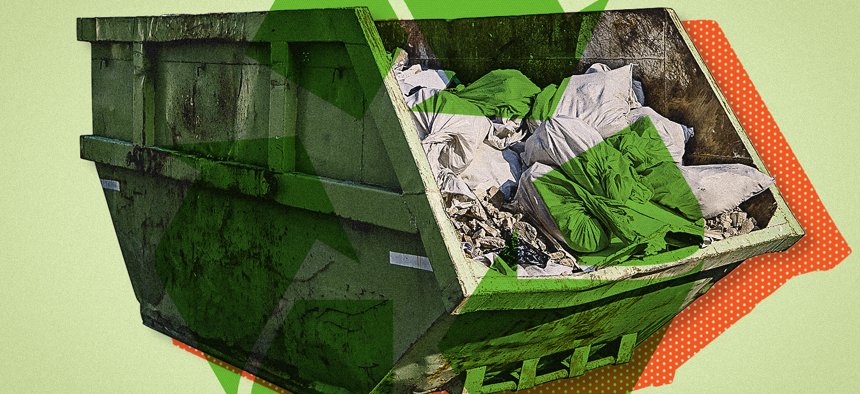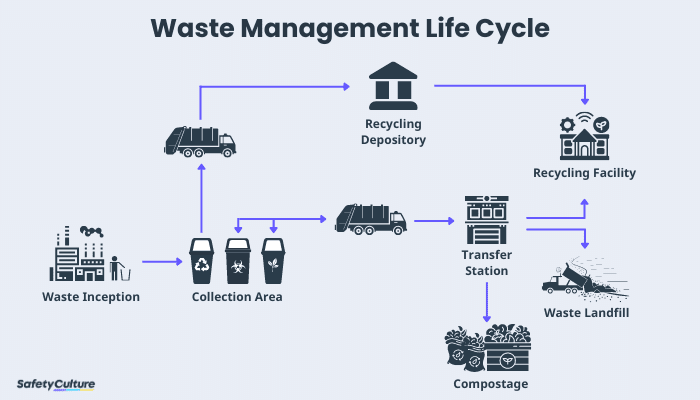The Influence of Recycling Lives Services on Communities and the Setting
The Influence of Recycling Lives Services on Communities and the Setting
Blog Article
Comprehending the Classification and Handling of Different Kinds of Waste
Effective waste monitoring is critical for ecological sustainability, calling for an extensive understanding of the classification and handling of various waste kinds. Home waste, industrial byproducts, unsafe products, digital refuse, and organic remnants each require distinct methods to ensure safety and security and reduce environmental damage. Applying appropriate segregation, therapy, and disposal methods is important to reduce damaging environmental influences and promote source preservation. As an example, the composting of natural waste contrasts sharply with the detailed procedures needed to handle dangerous materials. This multifaceted approach to waste management highlights its intricacy and the crucial demand for specialized understanding in this domain name.

Home Waste
Home waste, including a broad variety of thrown out materials created from day-to-day living activities, represents a considerable component of the overall waste stream - recycling lives services. This classification consists of organic waste such as food scraps, lawn trimmings, and paper products, alongside not natural products like plastics, metals, and glass. The diverse nature of family waste requires effective classification and administration to minimize ecological impact and advertise lasting living techniques
Efficient home waste administration starts with segregation at the resource, assisting in recycling, composting, and secure disposal. Organic waste, for example, can be composted to create nutrient-rich soil changes, decreasing land fill burden and improving soil health. Recyclable materials, including paper, glass, and particular plastics, can be processed and repurposed, decreasing and conserving sources energy intake associated with brand-new product production.
Furthermore, dangerous family waste such as batteries, electronic gadgets, and cleansing chemicals needs specialized managing to protect against soil and water contamination. Public understanding projects and hassle-free disposal choices play important functions in making certain appropriate disposal and recycling of these materials. By executing robust waste decrease techniques and fostering area involvement, towns can considerably alleviate the environmental footprint of household waste.
Hazardous Waste
Hazardous waste, a significant factor to worldwide waste generation, incorporates a diverse series of materials generated by manufacturing, building and construction, and various other commercial tasks. This category consists of byproducts such as scrap steel, plastics, rubber, chemicals, and other deposits. The make-up and volume of hazardous waste can vary significantly depending on the market and manufacturing processes entailed. Efficient administration of hazardous waste is important for decreasing ecological impact and advertising lasting methods.
The handling of industrial waste typically involves several procedures: collection, therapy, segregation, and disposal. Collection systems are designed to efficiently gather waste materials from various resources within an industrial procedure. Partition is important, as it guarantees recyclable products are divided from non-recyclable ones, which can be guided in the direction of ideal recycling or disposal networks. Treatment procedures, including physical, chemical, and biological approaches, are used to lower the toxicity, volume, and ecological effect of the waste. Lastly, disposal techniques like landfilling or incineration are used for waste that can not be reused or dealt with.
Adopting techniques such as waste minimization, resource recuperation, and recycling can considerably reduce the problem of hazardous waste on the atmosphere, adding to even more lasting industrial techniques.
Contaminated Materials

Destructive wastes can damage or ruin living products and cells. Combustible wastes can conveniently ignite, presenting fire threats, while responsive wastes can trigger explosions or launch harmful gases upon call with other materials.
Efficient contaminated materials management includes a number of key techniques: recognition and partition of dangerous products, safe transport and storage, and suitable therapy and disposal. Therapy approaches may consist of chemical stabilization, neutralization, and incineration. Regulatory conformity is necessary, guided by frameworks such as the Source Conservation and Healing Act (RCRA) in the USA, which ensures secure and environmentally sound management of harmful waste.
Electronic Waste
Electronic waste, often abbreviated as e-waste, stands for an expanding challenge in waste monitoring as a result of the rapid obsolescence of technology. This classification encompasses a wide series of disposed of digital devices, including smartphones, computer systems, televisions, and house appliances. The intricacy of e-waste hinges on its composition; these things consist of a this mixture of useful products such as gold and copper, as well as unsafe compounds like lead, cadmium, and mercury.

Regulations and guidelines, such as the European Union's Waste Electric find this and Digital Equipment (WEEE) Regulation, goal to promote accountable e-waste management. These policies mandate producers to help with the collection and recycling of digital items, thereby reducing the worry on garbage dumps and minimizing ecological contamination.
Organic Waste
Organic waste, encompassing eco-friendly materials such as food scraps, lawn trimmings, and farming residues, comprises a considerable portion of the community strong waste stream. This sort of waste is significant not only for its quantity but additionally for its prospective ecological impact otherwise handled appropriately. Organic waste can disintegrate anaerobically in landfills, generating methane, a powerful greenhouse gas contributing to environment change.
Proper handling of natural waste involves numerous methods. Composting is a commonly adopted approach, transforming natural materials right into important garden compost that can enhance soil and assistance lasting farming. This process additionally lowers the quantity of waste sent to garbage dumps. Another technique is anaerobic digestion, which damages down raw material in the lack of oxygen, generating biogas that can be made use of as a renewable resource source. Furthermore, diverting food waste from garbage dumps through contribution programs can minimize food instability while lessening waste.
Municipalities and services are significantly acknowledging the relevance of organic waste management. Applying extensive organic waste reusing programs not just minimizes ecological influences yet also lines up with wider sustainability goals, advertising a circular economy where resources are continuously recycled and repurposed.
Final Thought
Effective waste monitoring official website and environmental security necessitate a detailed understanding of the category and handling of different waste kinds. Implementing proper methods for each waste type makes certain responsible and risk-free waste monitoring practices, inevitably contributing to the defense of environments and public health.
Efficient waste monitoring is pivotal for ecological sustainability, calling for an extensive understanding of the category and handling of various waste types.House waste, including a broad selection of discarded products produced from daily living tasks, stands for a significant component of the general waste stream.Industrial waste, a major factor to global waste generation, includes a varied array of products generated by production, construction, and various other industrial tasks (recycling lives services).Dangerous waste, a crucial problem in waste administration, consists of products that position significant dangers to human wellness and the setting due to their toxic, destructive, flammable, or responsive buildings.Organic waste, encompassing naturally degradable products such as food scraps, backyard trimmings, and agricultural residues, constitutes a significant portion of the municipal solid waste stream
Report this page